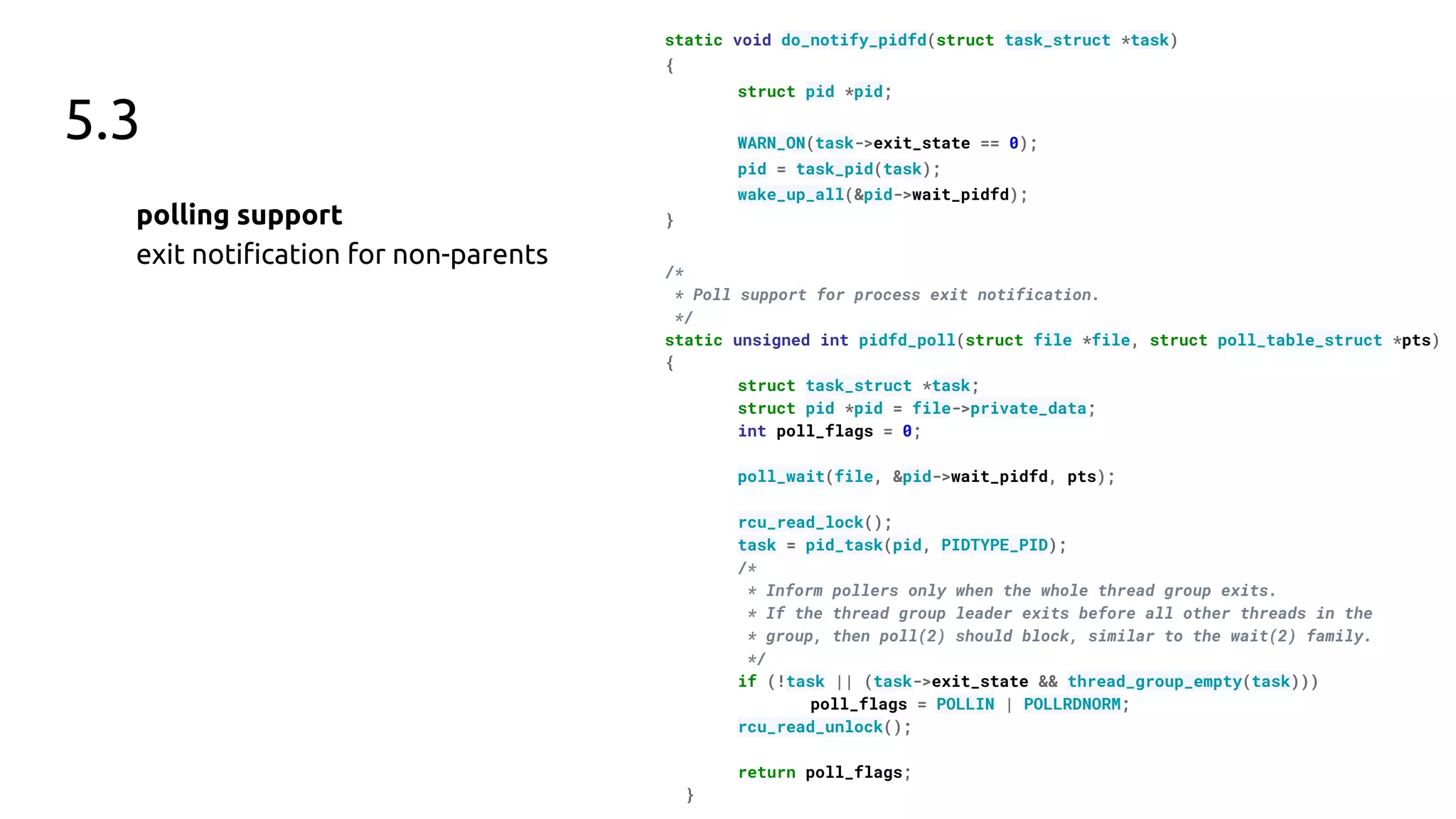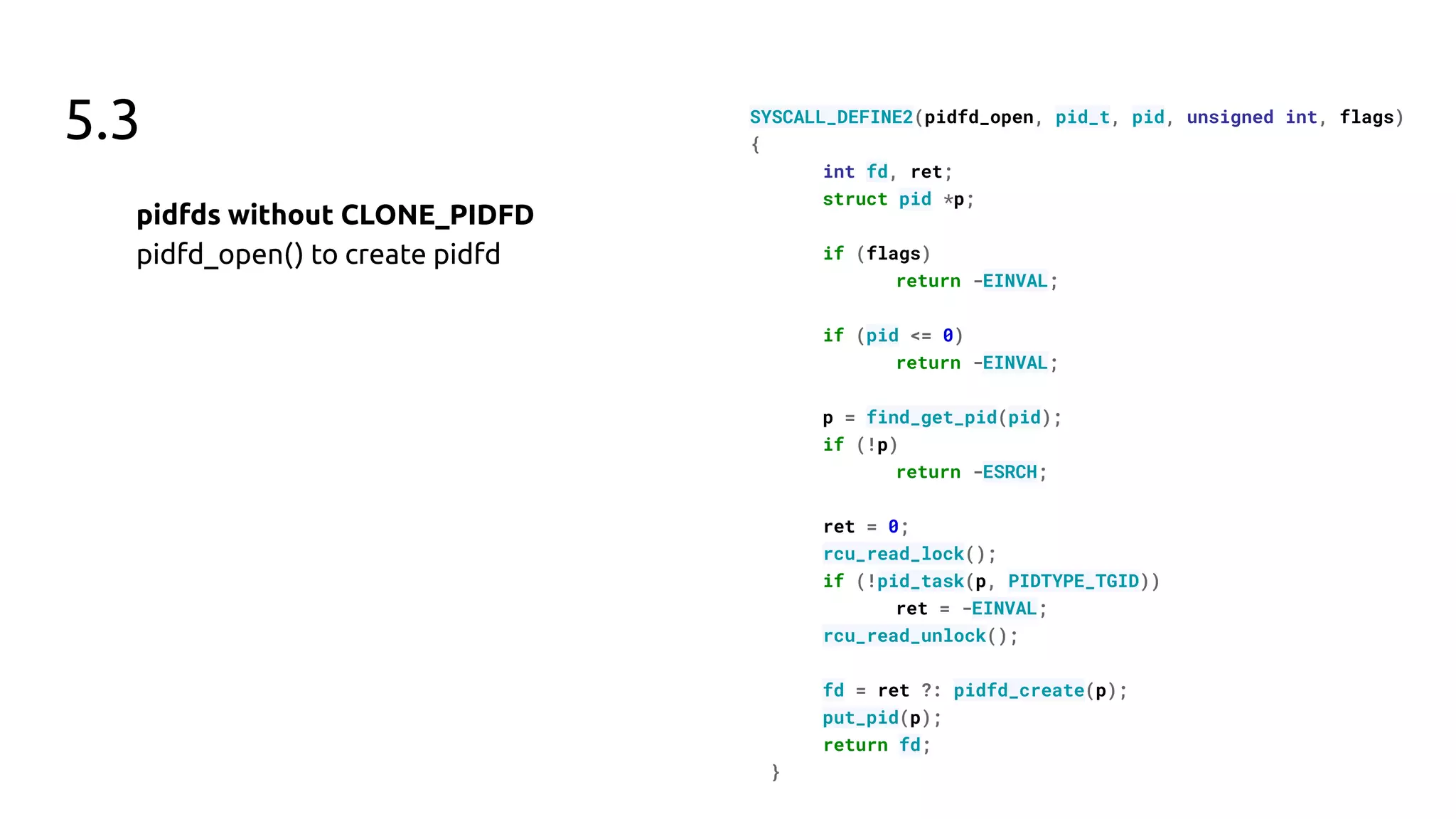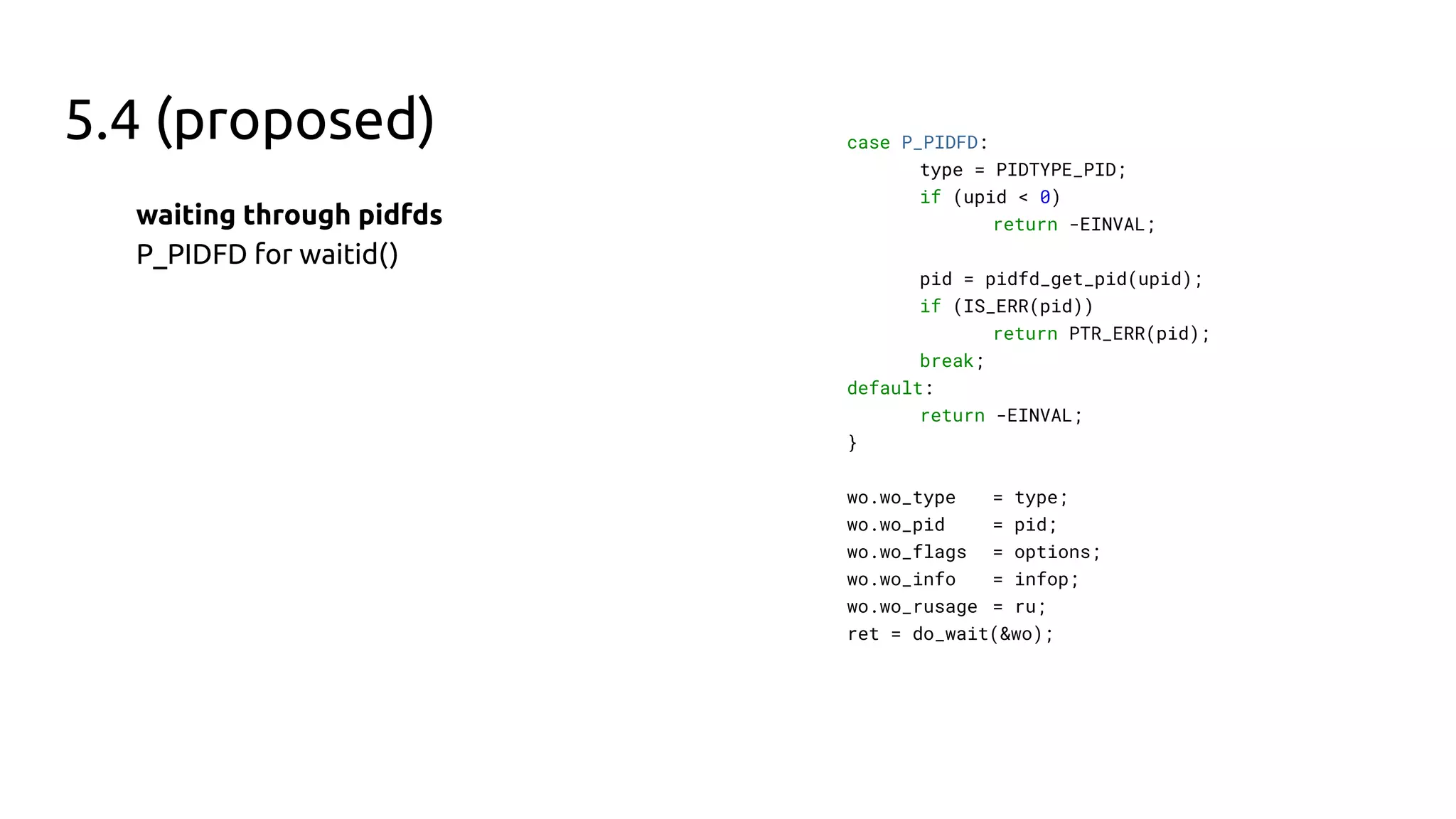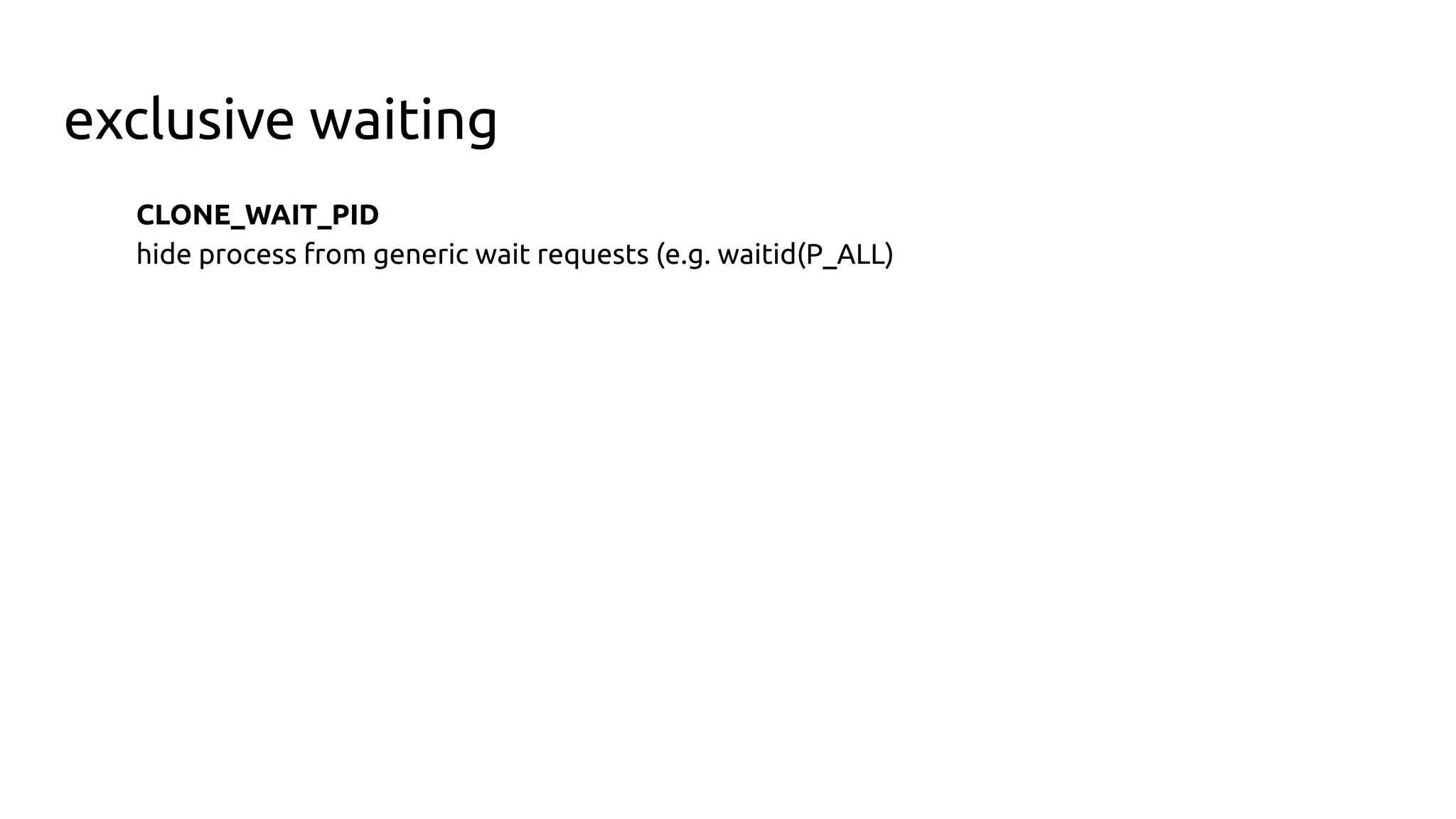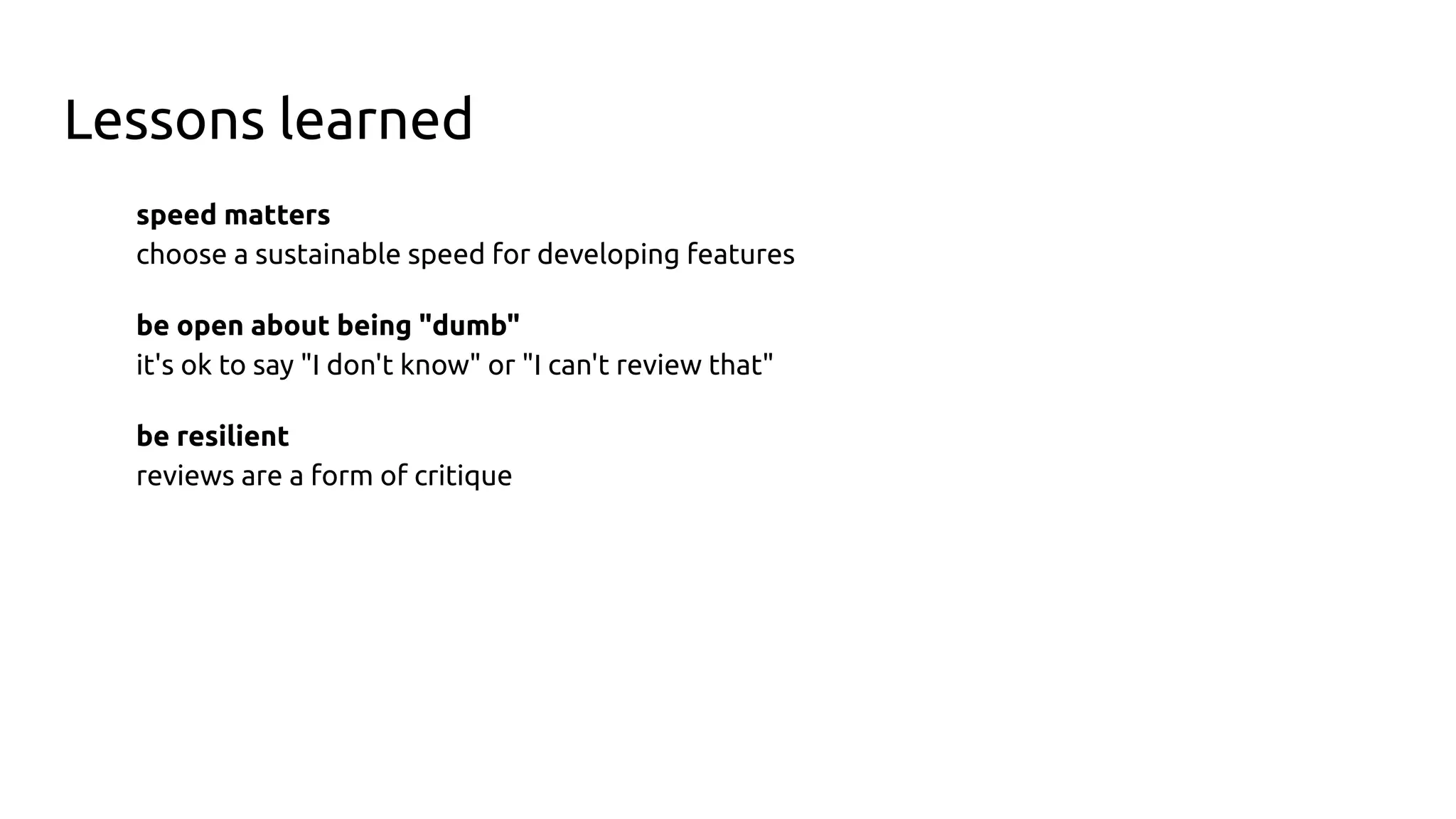The document discusses the pidfd feature in Linux which provides a file descriptor referring to a specific process. It summarizes the motivation for pidfds including issues with pid recycling and existing use cases from software like dbus and systemd that indicate userspace demand for this feature. The document then outlines the development of the pidfd kernel API over 4 Linux releases, including additions such as sending signals via pidfds, creating pidfds during process cloning, and polling support for exit notifications.
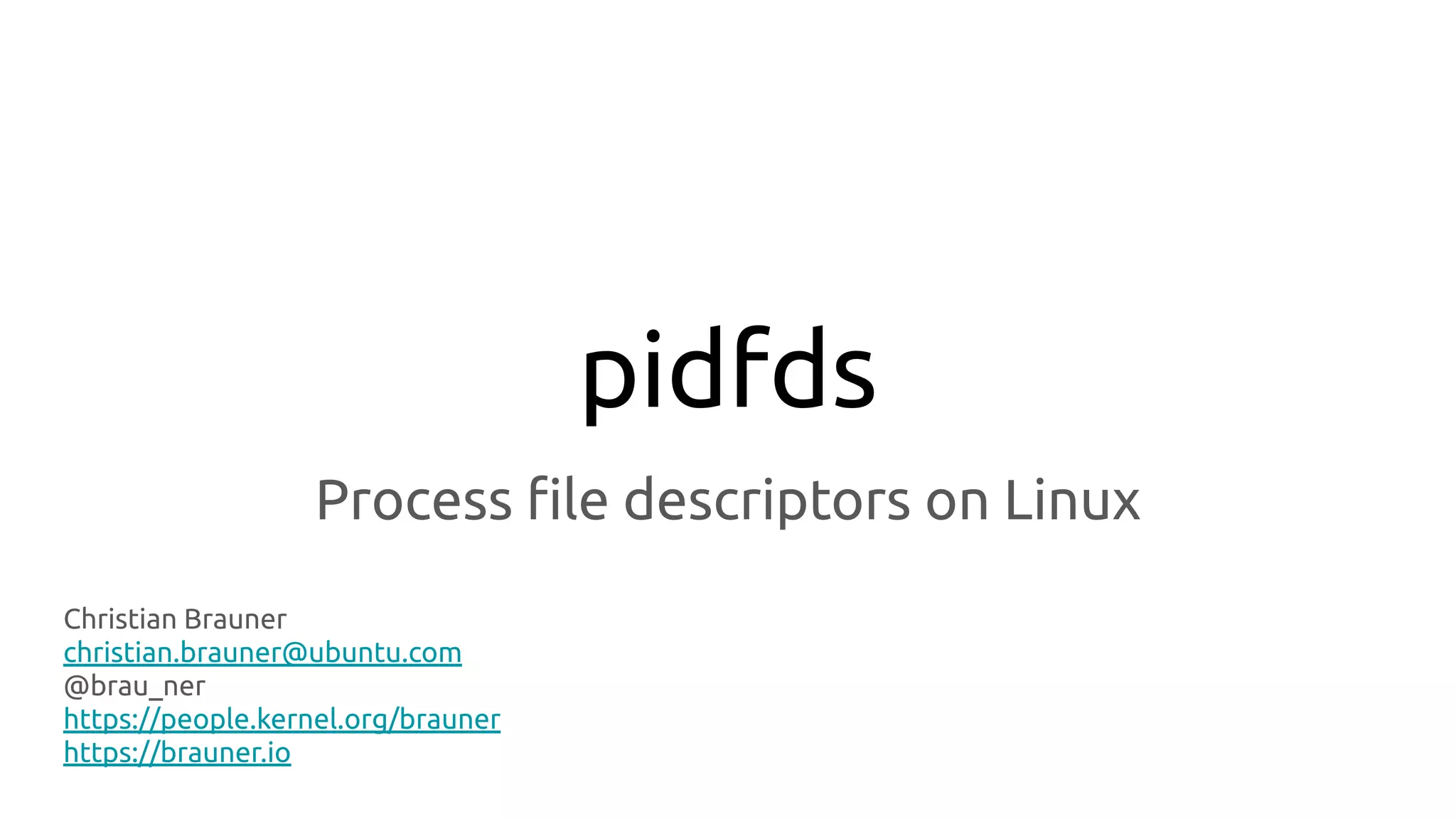
![pidfd: what's that?
file descriptor referring to a process
specifically, an fd referring to a thread-group leader
stable, private handle
fd guarantees to reference the same process
pidfds use pre-existing stable process handle
reference struct pid, not task_struct
struct pid
{
refcount_t count;
unsigned int level;
/* lists of tasks that use this pid */
struct hlist_head tasks[PIDTYPE_MAX];
/* wait queue for pidfd notifications */
wait_queue_head_t wait_pidfd;
struct rcu_head rcu;
struct upid numbers[1];
};](https://image.slidesharecdn.com/pidfds-190926060032/75/Kernel-Recipes-2019-pidfds-Process-file-descriptors-on-Linux-2-2048.jpg)
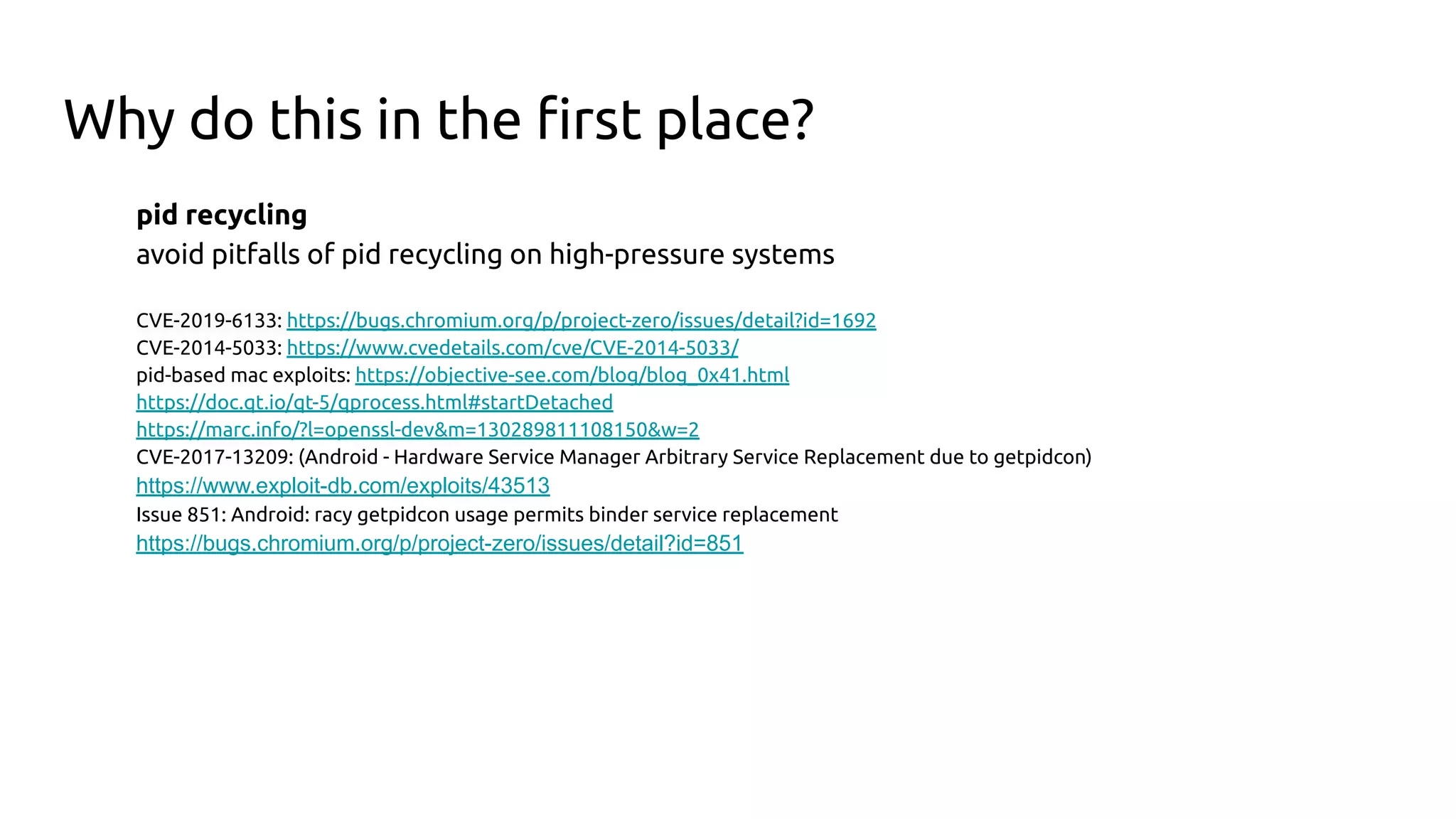
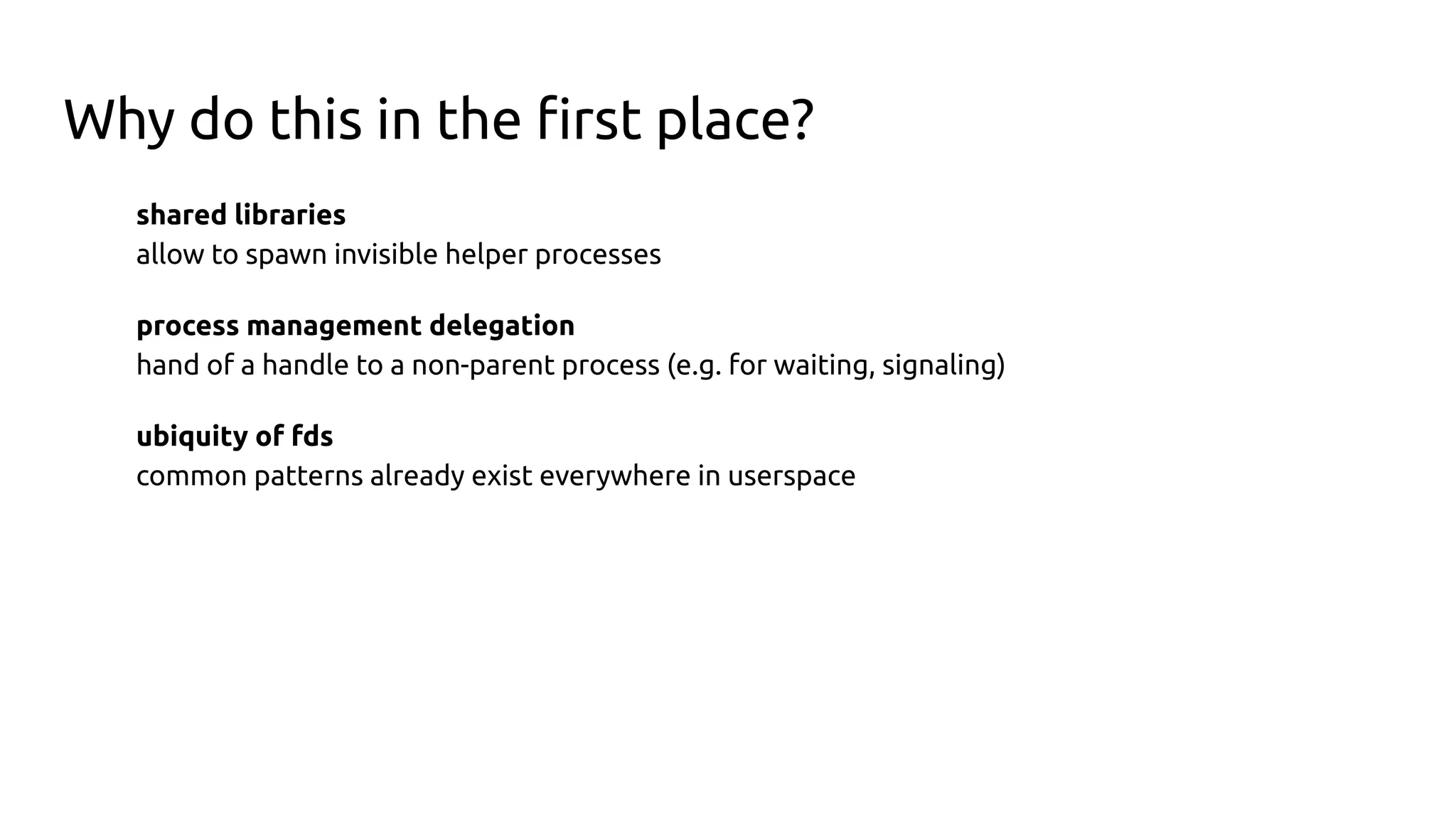
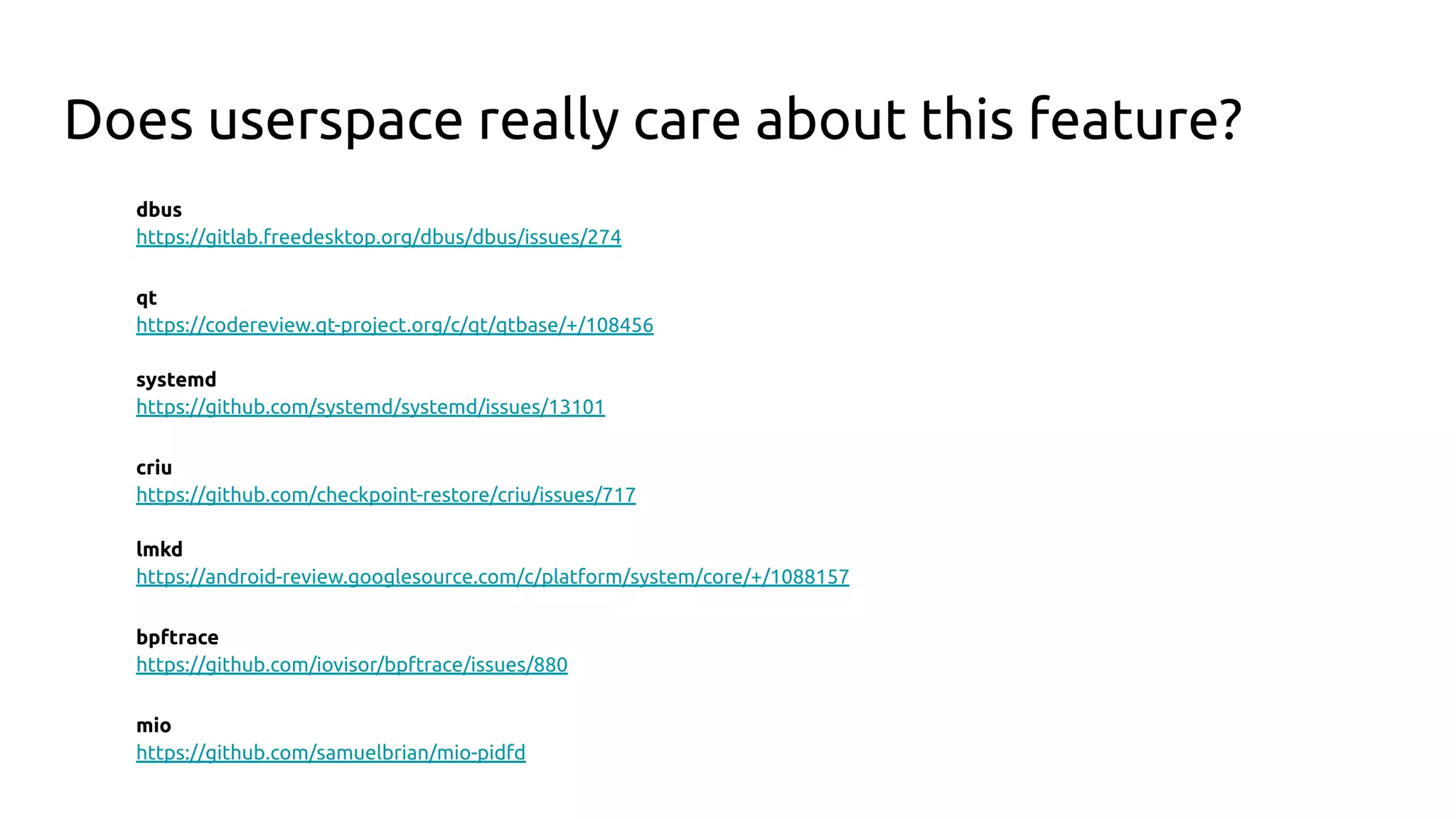
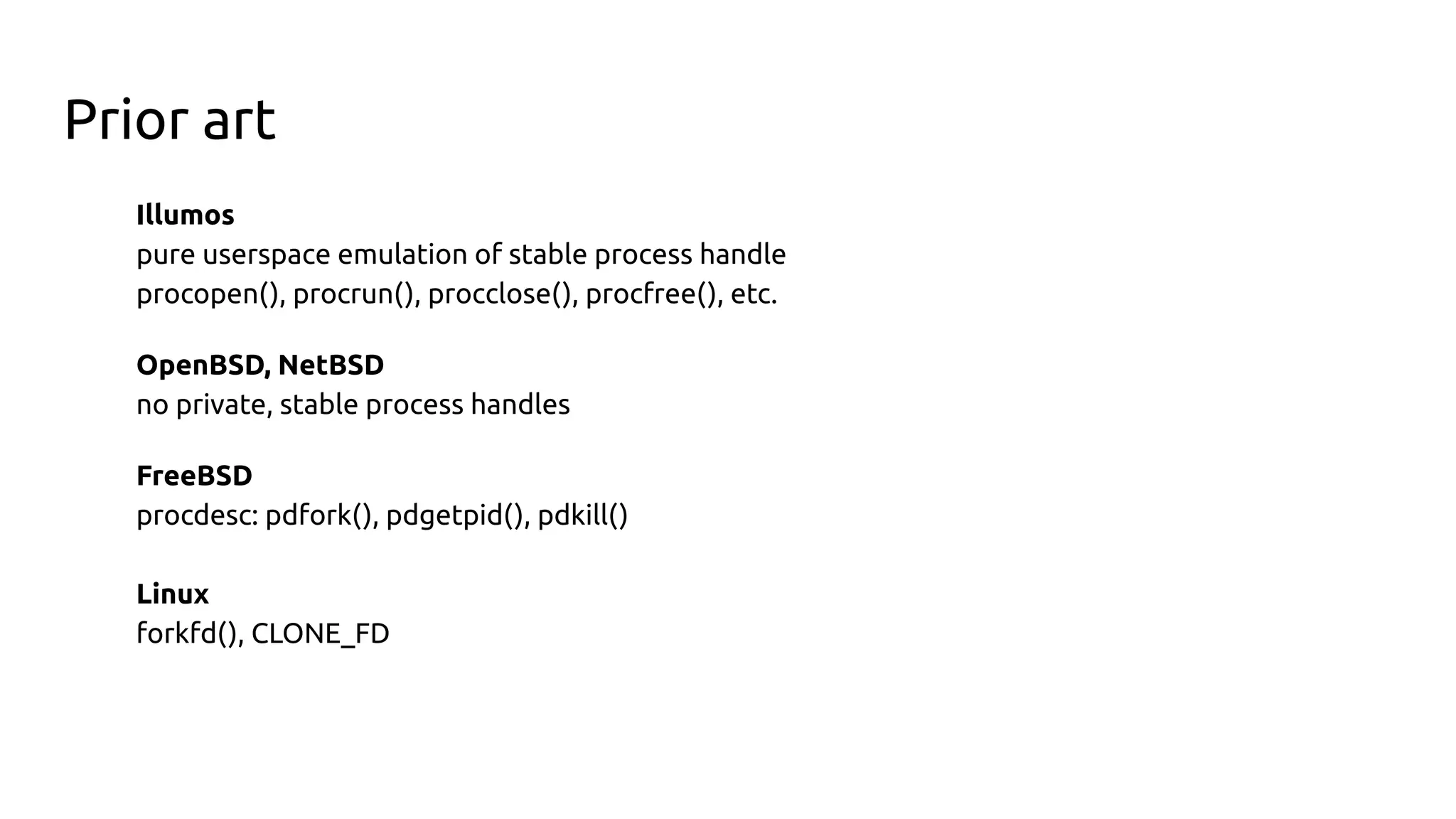
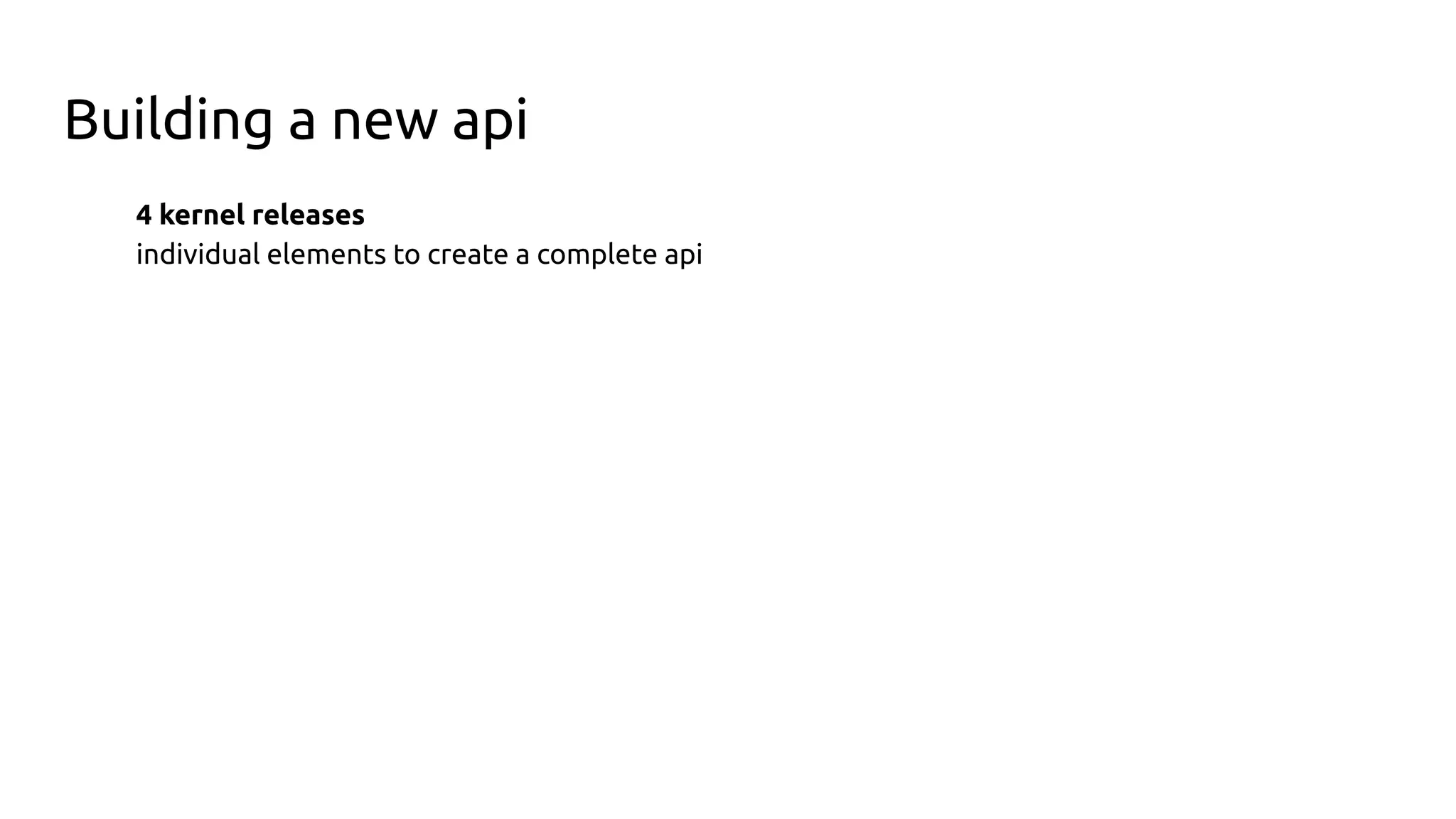
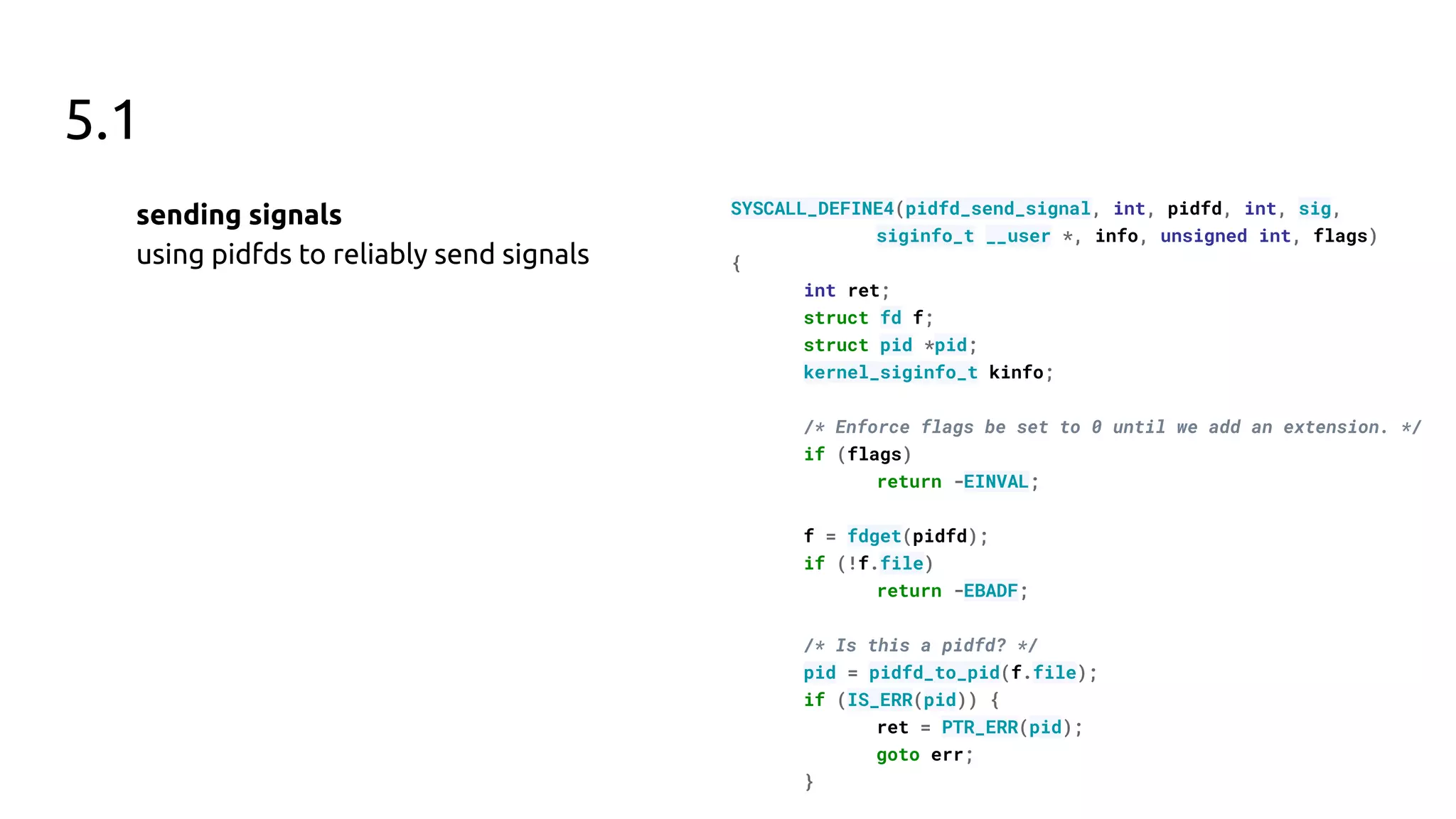
![5.2
CLONE_PIDFD
create pidfds at process creation time
O_CLOEXEC
pidfds are close-on-exec by default
/proc/<pid>/fd/fdinfo
contains pid of process in procfs pidns
/*
* This has to happen after we've potentially unshared the file
* descriptor table (so that the pidfd doesn't leak into the child
* if the fd table isn't shared).
*/
if (clone_flags & CLONE_PIDFD) {
retval = get_unused_fd_flags(O_RDWR | O_CLOEXEC);
if (retval < 0)
goto bad_fork_free_pid;
pidfd = retval;
pidfile = anon_inode_getfile("[pidfd]", &pidfd_fops, pid,
O_RDWR | O_CLOEXEC);
if (IS_ERR(pidfile)) {
put_unused_fd(pidfd);
retval = PTR_ERR(pidfile);
goto bad_fork_free_pid;
}
get_pid(pid); /* held by pidfile now */
retval = put_user(pidfd, args->pidfd);
if (retval)
goto bad_fork_put_pidfd;
}](https://image.slidesharecdn.com/pidfds-190926060032/75/Kernel-Recipes-2019-pidfds-Process-file-descriptors-on-Linux-9-2048.jpg)
